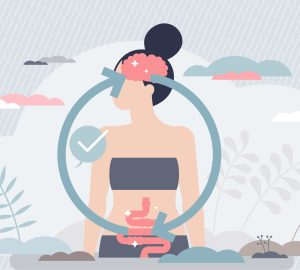This time of year, heating systems don’t just chase moisture from the air, they also steal it from your skin. Then you step outside, where chilly winds and dipping temperatures sap its freshness and elasticity even further. Health experts say autumn is a good time to think about facial rejuvenation treatments and good habits that can put the spring back in your skin.
skin solutions
“As soon as the changing leaves make everything look beautiful outdoors, dry air starts to have the opposite effect on your skin,” says Carol Anderson, RN, CANS, owner of Nouveau, A Boutique Medspa. “Especially if your home or office HVAC system has no humidifier, skin can start to feel tight very quickly. Even when you do a thorough job of hydrating topically and internally, you still may experience dryness. It’s a good idea to use a combination of solutions.”
To start, she recommends using a portable humidifier at night (which also can help you breathe easier), drinking plenty of water each day and applying an effective moisturizer. And when additional help is needed to revitalize skin, there are a number of medical spa treatments that work well, Anderson says. Often, they can be used in combination to produce tailored results.
• Intravenous treatments: Skin- and body-nourishing ‘IV cocktails,’ administered at a medical spa, can help skin stay resilient during colder months. “As winter arrives, we often recommend patients start with a Myers IV cocktail,” Anderson explains. “It has B complex vitamins for good hydration and vitamin C to help cells resist disease. We can add zinc and other nutrients for skin and immune system health, and biotin and glutathione to help with cellular turnover and the effects of aging.”
• Broadband light: The noninvasive photorejuvenation treatment can lighten red or brown discoloration.
• Microneedling: The refining treatment uses very fine needles to penetrate skin so platelet-rich plasma and vitamin serums can be applied.
• Chemical peel: The treatment enhances skin’s appearance by reducing fine lines and wrinkles, improving texture and alleviating pigmentation problems.
• Hydrating facial: Customized facial treatments can help restore skin’s moisture.
• Laser procedures: Different types of laser treatments can help with lines, wrinkles, rosacea, sun and age spots, broken capillaries, blemishes and acne scars.
» Erbium YAG laser treatments can help remove surface level and moderately deep lines and wrinkles. They also can be used to remove broken capillaries on the face.
» Intense pulse light laser treatments can improve skin texture and address problems like sun spots, rosacea and acne.
did you know?
Water is the best beverage for skin and body hydration. Avoid drinks with caffeine and sugar, which have a dehydrating effect.
tip: Autumn is a good time of year to schedule laser skin procedures because there is less chance of exposing skin to sunlight while it is healing.
prep work
Board-certified plastic surgeon Dr. Judith Gurley says taking good care of your skin before, between and after rejuvenation treatments is one of the most important ways you can help ensure a good outcome. “If you are planning to have microneedling, platelet-rich plasma or retinol therapy, for example, you need to prime the skin so it responds well,” she explains. “You’ll have much better results if you regularly use sunscreen and a good cleanser and moisturizer, and if you follow a healthy diet and lifestyle.”
The key is being willing to stick to a daily regimen, according to Gurley. “The healthier your skin is, the more beautiful it appears,” she notes. “It has a glow and feels well hydrated and supple. It also is more resilient. Healthy skin looks great and is free of damage that can lead to problems like skin cancer.”
Anderson adds, “It’s important to remember that your skin is not just what you see on the outside. It is part of the integumentary system that also includes the linings of your oral cavity, airways and other structures of the body. The more you do to boost your entire system’s health, the more effectively you can fight off disease, and the more elastic and resilient your skin will be.”
don’t try this at home!
With the Internet at our fingertips, it’s easy to access any number of DIY skin care ideas and devices, but there are some methods best left to a trained health care professional. Performing them at home may lead to complications like infection, inflammation, swelling or bruising. It’s smart to consult a licensed professional for treatments like dermaplaning, derma roller microneedling, injectable fillers, lip plumping, acne extraction, cuticle cutting and chemical peels.
Jackie Carr, RN, ANP-BC, a licensed esthetician and owner of Pur-One MediSpa, says getting rejuvenation treatments in a professional medical office is preferable because trained personnel can supervise the process in a controlled environment and make sure the skin is responding properly. They also can provide advice about at-home skin care.
“It’s important not to overwork your skin during your daily regimen,” Carr says. “You don’t want to cause too much redness or damage capillaries. If you are using products with ingredients like glycolic acid or retinol, they likely are exfoliating your skin already, so you don’t want to do much more on top of that.”
She adds that while some over-the-counter products may be OK to use at home, the fact that they are available commercially isn’t a guarantee of safety or effectiveness.
tip: Use a broad-spectrum, SPF 30+ sunscreen year-round to help reduce risk of skin cancer and premature aging.








